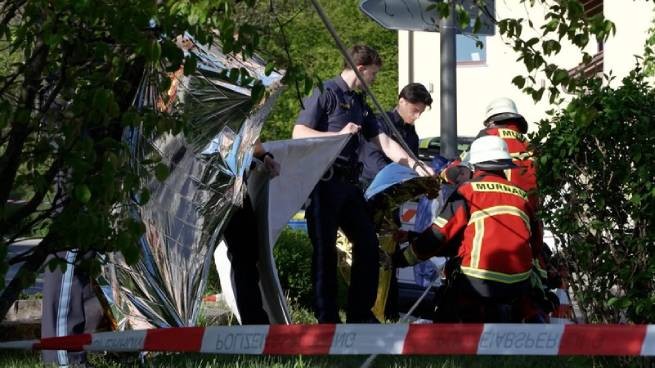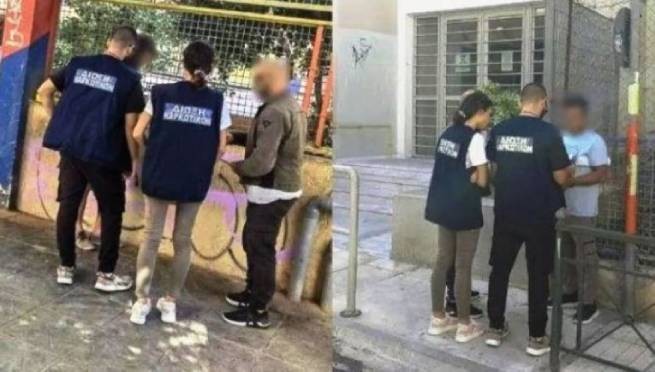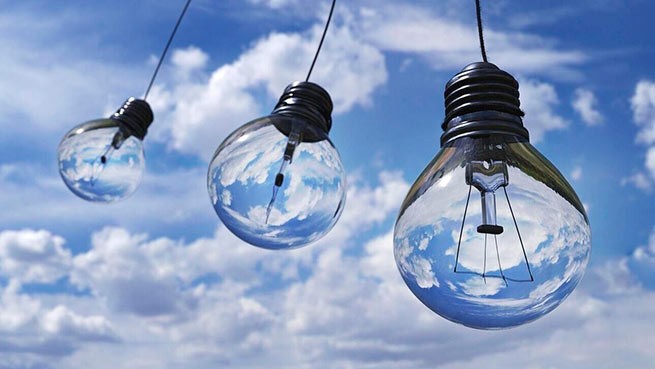To reduce the cost of electricity and ensure uninterrupted operation of the retail electricity market, the Ministry of Ecology and Energy adopted a total of seven measures, in particular, it introduced new electricity tariffs and a “Apollo”.
As for the new electricity tariffs, they promote transparent and simplified information to consumers about supplier prices. For the first time, every consumer will know how much and for what they pay their electricity supplier. A “green” tariff is being introduced, which is special and common to all suppliers. Its main advantage is that it makes it easier to compare prices between suppliers, allowing the consumer to make the best choice.
In this regard, the Ministry answers some key questions arising in connection with the new tariffs for low-voltage electricity for households and enterprises:
1. Why do we have so many items on our electricity bills?
Because suppliers have the right to have as many invoices as they want. In addition, this is due to the fact that the nature of the electricity procurement system implemented by the European Union is complex. There is a wholesale market where the price fluctuates (changes constantly, by day and hour). There are retail suppliers who buy wholesale and sell retail and have different trading policies. Moreover, the needs and desires of consumers are very different, depending on the profile of each (household, business, energy-intensive consumers, etc.).
2. What types of invoices are there?
First of all, there are three types of tariffs (fixed, variable and dynamic), and the consumer (whether a household or a business) chooses what he considers most profitable for himself. More specific:
- Fixed – these are invoices with a fixed validity period and a fixed price for the entire period of the contract.
- Hesitate tariffs that are tied to the wholesale price on the energy exchange. They are divided into two main categories: i. by setting the price before the start of the consumption period and ii. with post-fixed price.
- Dynamic, which means dynamic pricing is possible with different prices (even throughout the day) based on market prices. The condition for choosing these tariffs is the presence of a smart telemetry meter in the consumer supply.
For consumer convenience, invoices are color-coded. Blue is constant, yellow is fluctuation, and orange is dynamic. To these invoices we add a special green invoice, the special feature of which is that its structure will be simple and uniform, ensuring comparability for all suppliers. From January 1, 2024, all consumers who did not choose a specific tariff type during 2023 for the transition on January 1, 2024 will switch to it. This special rate, which will be available from each supplier, will be the same for all suppliers.
3. Why was this special green tariff introduced?
The main advantage of the feed-in tariff is that for the first time it facilitates the comparison of suppliers’ prices, transparent and simplified information to consumers about suppliers’ prices. On the 1st of each month, the estimated price will be announced on the website of the relevant supplier and reported to RAAEF. The consumer will know at the beginning of the month how much he is paying to the electricity supplier for the next month and, most importantly, what prices all other suppliers are offering.
4. For the green account, will the price change within a month?
No, the consumer will see the price every 1st number month, which will be “fixed” for the entire month.
5. Can the consumer choose another tariff instead of the one he has?
Yes, the consumer has the opportunity to choose any offered tariff at any time by signing a new contract with the supplier of his choice. The only exception is fixed tariffs, which by their nature are long-term contracts. Changes to the supplier or delivery invoice occur at any time and do not entail the right to compensation from the supplier due to the early departure of the customer, unless the fixed price invoice agreement is terminated.
6. Why are there different colors on the invoices?
To make it easier for the consumer to understand the nature of many different invoices so that they can better compare invoices between suppliers.
7. Is this system too “confusing”?
Yes, the European energy system is complex, and it is logical for the consumer that there is no time or desire to constantly figure out which supplier to choose. That is why the “green tariff” is introduced, in which he, without particularly caring, knows the two most fundamental things that interest him: firstly, what is price next month and, Secondly who will be the cheapest next month.
8. Should I change suppliers every month to find the cheapest one?
You have the right to do so. With green billing, you keep track of which supplier is the cheapest every month, and if after a month or a few months you are not happy with the supplier’s prices, you can always change. Sometimes it is reasonable for the consumer not to enter into the process, because changing suppliers for a difference of 1-2 euros per month is troublesome. It is also logical that if he sees that someone is systematically more expensive, he leaves him for someone who is systematically cheaper.
9. Why can’t I, who have a fixed blue invoice with a specific supplier, compare prices with other suppliers?
Unlike one special (green) invoice per supplier, in other invoice categories suppliers can issue more than one invoice per category, associated multiple times with either services, other products, or a combination of both. In addition, the volume of fixed assets may vary significantly depending on the supplier, which reduces the degree of comparability of the offered energy prices. For these reasons, creating a green invoice makes comparing invoices from different suppliers more direct, simpler and more transparent.
10. Will there be a price checking and comparison tool available?
Energy bills (electronic and printed), as well as other messages and emails that suppliers send to consumers, will now also include a QR code (to be scanned and read using a smartphone) and a link to the publication on the website Regulatory Authority for Waste, Energy and Water (RAAEF) price comparison tool. There, consumers will be able to receive monthly information on the price of their supplier’s special blanket tariff and compare it with all tariffs offered.
What other measures are there?
Emergency assistance to energy vulnerable populations based on heating needs for electricity
The amount of emergency assistance to energy-vulnerable consumers who heat with electricity will range from 45 to 480 euros. An estimated 1.2 million consumers will benefit from this measure. Assistance will be provided based on income and asset criteria that apply to heating benefits from oil, natural gas and other sources, and those who receive the above heating benefits, as well as those included in the social tariff for the population (STS) , which will continue to strengthen. Those interested can submit their applications through the AADE electronic platform “myThermansi” ( https://www1.aade.gr/gsisapps5/myThermansi/#!/home ).
Social tariff subsidies continue
In 2024, targeted subsidies for electricity bills of social household tariff beneficiaries will continue.
Social electricity tariff for large families
The social tariff KOT C applies to people with many children, and in this context there are expanded income criteria for inclusion, while property criteria will not be taken into account. Beneficiaries will be included in the social tariff through the IDIKA electronic platform by submitting an appropriate application.
Solving the problem of electricity theft
Electricity theft accounts for approximately 4.8% of the total energy market. In order to reduce it and, if possible, eliminate it, the current framework is being tightened. More specifically, the following is provided:
A) In addition to the existing prison terms, a mandatory monetary fine will be imposed in parallel (today these two penalties are imposed separately).
B) Temporary suspension of the enterprise’s activities and permanent in case of repetition, and deprivation, temporary or final, of a professional license for electricians in case of proven synergy (disciplinary measures).
C) New Declaration of Responsible Installer (YDE) when changing business operator in the same supply and YDE spot control with register of installer electricians (precautionary measures).
D) Collection – through the Code of Revenue Collection (KEDE) – of overdue and adjudicated claims DEDDIErelated to the theft of electricity.
Working with strategic defaulters
The concept of strategic defaulter has been established. In particular, a strategic defaulter is understood as a consumer who has systematically changed at least two suppliers over a period of five years, starting from January 1, 2020, without repaying his debt. Strategic defaulters will not be able to change suppliers without paying off their debt to the current supplier.
Apollo program
Apollo is the largest energy compensation program in the country. Its goal is to provide, through the installation of renewable energy stations with storage systems:
a) 90% of consumption of vulnerable households
b) 50% of local government consumption (OTA A’ and B’, such as buildings, pumping stations, street lighting), municipal water and sewerage companies (DEWA) and local water improvement organizations/total water improvement organizations (TOEB).
All regions of the country will participate in the program, where this is technically possible, depending on the development of interconnections.







More Stories
D. Sariyannis: “We expect African dust in mid-May”
Dust from the Sahara: first results of analysis of chemical components
Lyrid meteor shower, make a wish on a shooting star